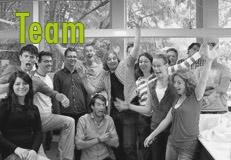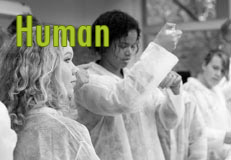Team:Groningen/Home
From 2010.igem.org
(Difference between revisions)
Joelkuiper (Talk | contribs) |
Joelkuiper (Talk | contribs) |
||
| Line 17: | Line 17: | ||
<div style="text-align: justify; margin-left: 10px"> | <div style="text-align: justify; margin-left: 10px"> | ||
</html> | </html> | ||
| - | + | Surface hydrophobicity is a very useful property and is used in many applications ranging from raincoats, antifouling coatings to applications in the field of medical sciences. | |
| - | + | The idea is to engineer a bacterium that once applied to a surface starts forming a fast growing rigid biofilm. The formation will trigger the expression of hydrophobic proteins. These hydrophobic proteins will be incorporated in the biofilm, causing strong hydrophobic surface activity. The result is a hydrophobic bio-based surface coating. | |
| - | + | ||
<html> | <html> | ||
</div> | </div> | ||
Revision as of 20:46, 25 October 2010



Surface hydrophobicity is a very useful property and is used in many applications ranging from raincoats, antifouling coatings to applications in the field of medical sciences.
The idea is to engineer a bacterium that once applied to a surface starts forming a fast growing rigid biofilm. The formation will trigger the expression of hydrophobic proteins. These hydrophobic proteins will be incorporated in the biofilm, causing strong hydrophobic surface activity. The result is a hydrophobic bio-based surface coating.
 Team.
This year a team of young inspired undergraduates from the University of Groningen participated in the amazing challenge of iGEM. A multi-disciplinary team of Molecular Biologists, Chemists, Computer Scientists, Journalists and others spend the summer creating a wonderful project in the emerging field of synthetic biology
Team.
This year a team of young inspired undergraduates from the University of Groningen participated in the amazing challenge of iGEM. A multi-disciplinary team of Molecular Biologists, Chemists, Computer Scientists, Journalists and others spend the summer creating a wonderful project in the emerging field of synthetic biology
 Model.
Using computer models we worked on the frontiers of knowledge. Gene expression was simulated and a simple explanation for cell differentiation was proposed. Also aiding in ethics and practical feasibility a kill switch system was studied. Finally a new standard was proposed for characterizing Biobrick parts so future can be streamlined.
Model.
Using computer models we worked on the frontiers of knowledge. Gene expression was simulated and a simple explanation for cell differentiation was proposed. Also aiding in ethics and practical feasibility a kill switch system was studied. Finally a new standard was proposed for characterizing Biobrick parts so future can be streamlined.
Our sponsors
 "
"









